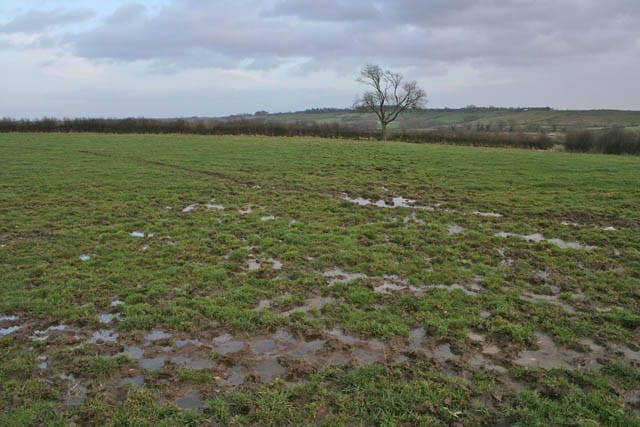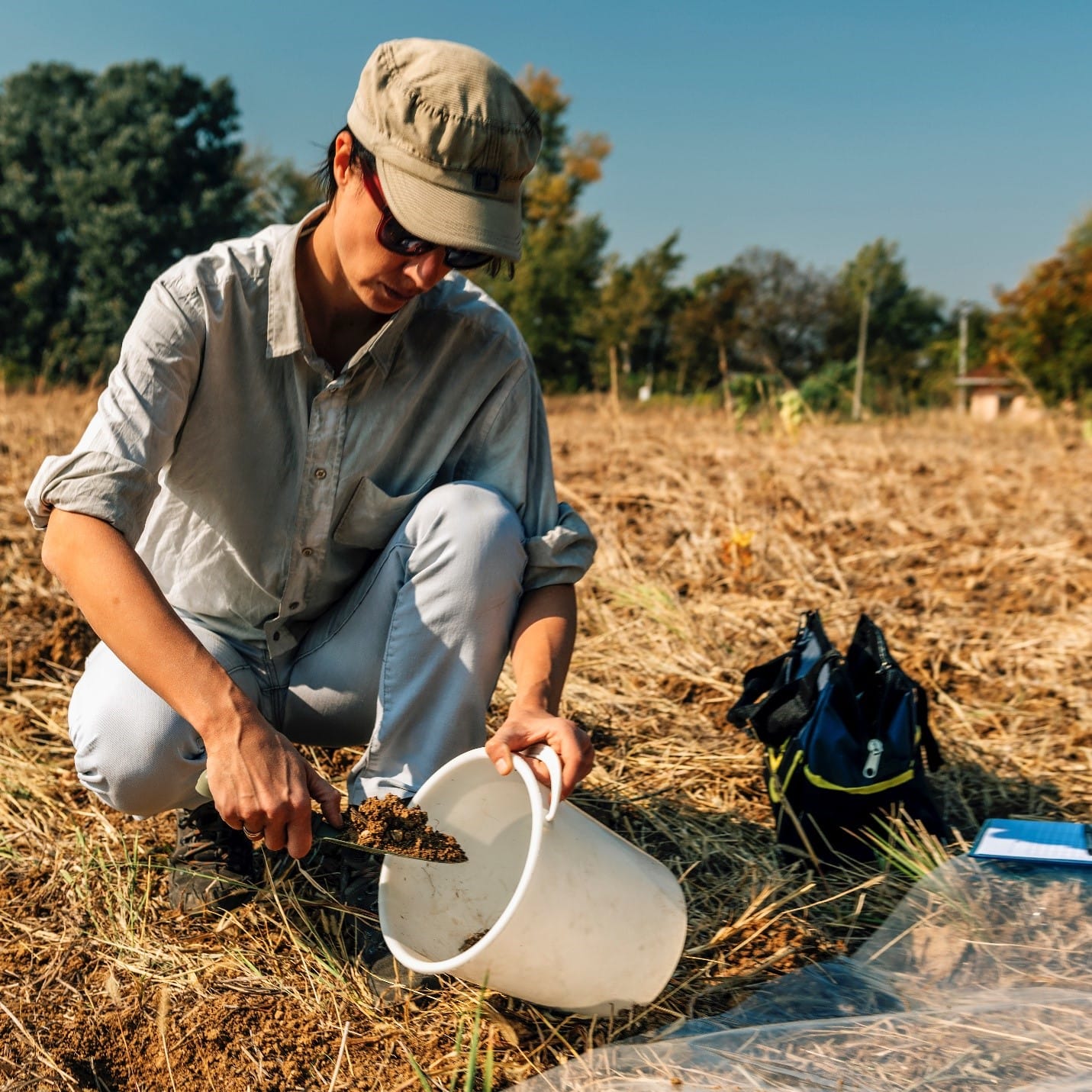Article Summary:
As you already know, heavy clay and wet soils tend to be a bit tricky. Establishing crops in wet soils can be an uphill task. But it’s absolutely necessary. Because the roots of growing plants can help you break open heavy soils. And the organic matter will begin to slowly improve soil structure and fertility. So, let’s talk all about the best crops that will help you manage your heavy and wet soils well!
As you already know, heavy clay and wet soils tend to be a bit tricky. Establishing crops in wet soils can be an uphill task.
But it’s absolutely necessary. Because the roots of growing plants can help you break open heavy soils. And the organic matter will begin to slowly improve soil structure and fertility.
So, let’s talk all about the best crops that will help you manage your heavy and wet soils well!
The more you build up a structure with diverse roots and organic matter, the more you end up improving the carrying capacity of the soil and improving its drainage.
Selecting the right pasture for wet areas helps increasing the productivity of the area and utilisation of water. Species like lucerne, chicory and cocksfoot are not persistent, and thus a bad choice for waterlogged soils. Short-rooted pastures also get easily damaged by pugging.
How to choose the right pasture species
- Should be selected in tandem with the environment in terms of rainfall, temperature, length of the growing season, soil characteristics and pests or diseases
- The species selected should be capable of providing good quality and quantity of feed throughout the year and protect the pasture against soil erosion
How does a crop survive wet conditions and heavy soils?
A branching or a laterally spreading plant and root structure that essentially remains in the upper soils, but digs deeper for moisture and nutrients if it needs to, is a good feature for crops to have. An example of a crop with such a characteristic is white clover.

Alfalfas, red clovers, brassicas and other tap-rooted species and broadleaf crops are better suited for conditions of drought or in well-drained soils. However, once established, they are effective at up taking excess moisture. These crops are also good at breaking through compaction that is usually associated with heavy and waterlogged soils. A handy trick is to choose the varieties with branched roots, which help them tolerate wetter soils better, in addition to their taproots.
Red clovers
Red clovers are a good choice in moderately wet soil conditions. They have good seedling vigour and competitiveness in a mixed stand and can also tolerate lower fertility and more acidic, wetter conditions. They are shade-tolerant, making them a great choice for frost-seeding, though white and alsike clovers are more suited for wet soil conditions.
Milvus red clover
Milvus red clover is a rare red clover variety that spreads by stolons. It has a shallow root system and its spreading tendencies make it better suited to wet conditions.
Alsike clovers
Alsike clovers tolerate soils that have varying levels of drainage. It is a good legume for flood-prone areas and acidic conditions. It is neither a red nor a white clover. It has white flowers that turn pink over time as the crop matures. You could also mix alsike with other clovers and cool-season grasses.
White clovers
Medium and small white clovers have a good tolerance to wet soils. These clovers are skilled in spotting out and filling gaps. They’re also sturdy enough to withstand equipment traffic and heavy grazing. They are a good choice for wet conditions but are also adept at handling hot and dry summers. White clovers in particular are better than their counterparts with their spreading activity and creating permanent stands. Individual plants may die soon but the low-growing crop is great at pushing up new plants.
Tall fescue
Tall fescue is a versatile crop that can handle both droughty and wet soils. It can produce more forage than other cool-season grasses on soils that have an acidic pH level of below 5.5. Its high levels of durability and wet soil tolerance have made it a popular pasture choice. Choose improved, soft-leaf and endophyte-free varieties for forage since the traditional tall fescues have toxic endophytes that could harm animal health and productivity.
Birdsfoot trefoil
This is a taproot legume, just like alfalfa, but it has a better tolerance to wet and acidic conditions. Its tannic acid content lowers its risk of spreading bloat to unsuspecting cows but it’s a crop that is difficult to establish and less productive than alfalfa. Reed canarygrass serves as a good friend to birdsfoot trefoil as they tolerate similar soil conditions and are slow starting.
Reed canarygrass
Reed canarygrass is an excellent choice for wet soils. When it uses its rhizomes to spread, it fills up all the gaps and patches beautifully. Though it is an expensive seed and is slow starting, it will persist, thrive and spread well when established. It does have the habit of being bossy and taking over the area quite aggressively so be sure to plant reed canarygrass only in areas where you want it.
Timothy
Timothy has shallow roots and can tolerate moist soils well but works best on soils that are wet for a brief amount of time and then dry out. It has very high productivity in the spring season and then the productivity dips considerably in summer and fall. It will not compete when established with a mix of legumes.
Meadow fescue
Meadow fescue tolerates wet soils, but not flooding. It is more winter hardy than tall fescue but gets negatively impacted by other species during drought. Meadow fescue grows well in cooler climes.
Perennial grasses
A favorite choice overall with farmers like you, ryegrass has moderate moisture tolerance and tends to survive better in cool, moist soil. Perennial grasses can be considered as the backbone for much of the feed base for the high rainfall temperate areas in Australia.
This is a handy table that will give you crisp and concise information about the preferred species you can opt for based on the rainfall, climate and soil type.
| Rainfall Zone | Climate | Soils | Preferred Species |
|---|---|---|---|
| Winter Rainfall | Cool climate mild summers | Better fertility soft summers | Perennial ryegrass |
| Heavier soils, prone to waterlogging | All types of phalaris | ||
| Lighter soils, high aluminium | Cocksfoot | ||
| Warmer climate hot summers | Better fertility | Mediterranean tall fescue | |
| Heavier soils prone to waterlogging | Phalaris winter active | ||
| Lighter soils, high in aluminium | Cocksfoot prairie grass | ||
| Intermediate rainfall | Cool climate mild summers | Better fertility soft summers | Perennial ryegrass or tall fescue |
| Heavier soils, prone to waterlogging | Phalaris | ||
| Lighter soils, high aluminium, | Cocksfoot prairie grass | ||
| Warmer climate hot summers | Better fertility | Tall fescue | |
| Heavier soils, waterlogging prone | Phalaris | ||
| Lighter soils, high aluminium | Cocksfoot prairie grass | ||
| Summer rainfall | Warmer climate hot summers | Better fertility heavier soils | Mediterranean tall fescue |
| Better fertility, rotational grazing | Brome grass or prairie grass | ||
| Subtropical | Better fertility and management | Kikiyu |
You can do a lot on your wet soils provided you know the forage that will be the perfect match for your soil conditions. You can also set certain management guidelines to increase your crop and pasture yields and boost the overall profitability of your farm.
- Conduct soil tests. When your ESP is more than 6%, applying gypsum could help increase crop yields in poorly drained soils and increase the establishment of lucerne.
- Test your subsoil to do a quick check if high salt levels or sodicity are limiting the growth of roots
- Reduce compaction and loss of structure by limiting working during the wet periods, avoiding stocking paddocks when waterlogged and using controlled traffic to reduce compaction
- Improve organic matter of the soil by growing the right pasture and crops
- Choose the right species that will adapt to heavy clay or wet soils
- Use lucerne to dewater your soil profile and minimise waterlogging in the years to come

That brings us to the end of this article. If you found this useful, you might also want to check out our 3-part series on imporoving soil fertility. Or more articles on farm land management.
Have a question, leave it as a comment below, and we’ll answer it for you.
Until we meet again, happy farming!
- The Dedicated Team of Pasture.io, 2021-06-09